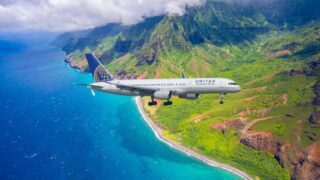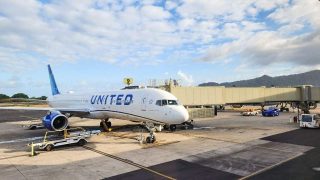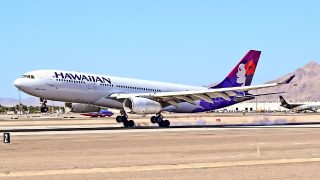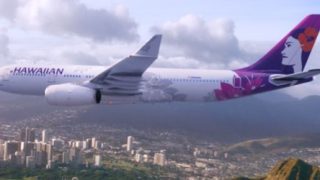Hawaiian Airlines Flight 16 (Flightaware) made an emergency landing at LAX Tuesday evening due to a hydraulic system failure. The plane departed Honolulu on time at 12:48 PM and was due to arrive in San Diego. Instead, the plane ended up diverting to Los Angeles. It is being reported that, following a safe landing at 8:27 PM, The Airbus A330 widebody was possibly met with emergency crews, resulting in a temporary closure of the runway.
Update: The plane, with 284 passengers and crew on board, was on approach to the San Diego airport. For unknown reasons, the crew initiated a go-around at about 1000 feet altitude. During the climb, the crew indicated “they had lost one of their hydraulic systems, the gear was still down, they were working their checklists and computed their landing performance.” That is according to the reliable source Aviation Herald. A decision was then made to divert to LAX because it offers a longer runway than San Diego. LAX runways are up to nearly 2,000 ft longer than SAN. En route to Los Angeles, the plane did not climb above 6,000 ft. The A330 remained on the ground at LAX as of this morning.
Just three weeks ago, another Hawaiian Airlines flight suffered hydraulic system problems of unknown type and severity that also resulted in an emergency landing. In an airliner, hydraulics control the movement of the aircraft, left and right, upwards and downwards. A hydraulic failure can lead to loss of control.
No injuries were reported on yesterday’s flight, and it is unknown exactly what else may have transpired or if there was an evacuation following the landing. It was previously reported, as confirmed by Aviation Herald, that the plane approached San Diego first before changing direction and flying at a low altitude north to LAX.
Thus far, Hawaiian Air has only said that the plane diverted to LA due to a possible hydraulic fault. They said it landed “without incident.” Once outside the terminal, passengers were provided ground transportation (bus) to their destination in San Diego.
The pilot called for an emergency landing due to the severity of the concern.
Hawaiian Airlines flight issues in December and now January
It has been a crazy few weeks for the Hawaii bellwether carrier, and today was the third recent event.
1. The airline had a mass injury turbulence event which is being followed up by an NTSB investigation into what happened. 36 passengers were injured in the event, and 11 of the injuries were serious. It was on approach to Honolulu during unusually stormy and windy weather.
2. Emergency landing at Kona on December 19. In that incident, flight 230 was delayed departing Kahului Maui for unknown reasons, which were likely mechanical. The Boeing 717-200 landed safely at Kona at 8:15 p.m. and was towed to the terminal. The crew declared an emergency, also due to an unspecified hydraulic issue. The FAA is investigating.
Airliner hydraulic faults and A330 incidents.
Hydraulic faults can range from slow leaks to various potential component or system failures. The problem would have been presented to the crew through the aircraft warning system. We were just told that the A330-200 in today’s incident has three independent hydraulic systems. These involve flight-control surfaces, nose-wheel steering, braking, and spoilers among other things.
To date, A330 aircraft has been involved in 47 serious incidents, which today’s event would not be qualified as. Among those that are listed is last month’s major turbulence incident on Hawaiian Airlines flight 35 from Phoenix to Honolulu.
Hawaii emergency landings.
Hawaii emergency landings can, of course, be for a variety of reasons that impact the safety and operation of the plane, crew, or passengers to the degree that necessitates an early flight termination.
When an emergency landing is called, the flight receives priority over all other aircraft operations.
We’ll update you with any further information on this event.
Get Breaking Hawaii Travel News







As Rich commented: “The A330 does have a more checkered history than the 320 series though”.
And from the article: “To date, A330 aircraft has been involved in 47 serious incidents, which today’s event would not be qualified as”.
Would that be enough to consider grounding the plane until the problem is found?
All the money these companies make they need to really start maintaining there equipment .invest back into your company thank you
I assure you all US based aircraft are maintained properly per both the FAA and respective company procedures, policies and manuals. There are redundant systems built into every aircraft. In the A330, there are two main hydraulic systems while one is an emergency backup. All three systems go to multiple control surfaces so in the event one system fails, the other 2 will still operate and ensure safe flight. My fellow AMT’s all work hard and often work long hours to ensure each aircraft is ready for safe flight every day. Your comment that aircraft are not maintained is incorrect
The sooner they roll out the Dreamliner for overseas flights the better. They should also reconsider using the Airbus Regional jets for interisland. All that said Hawaiian is a safe carrier and all airlines should err on the side of caution as appears to have been the case here.
What Airbus regional jets?
A220 series.
Hawaiian airlines seems to have a maintenance problem.
The offshore maintenance could be the problem!
This. HAL has never had a hull loss, but increasing competitive pressures must be putting a lot of cost cutting pressures on the org. Especially when under threat by predatory competitors such as Southwest.
I think it ill advised to make suggestions about any airline cutting maintenance for financial reasons without evidence. Similarly making claims on Airbus equipment have less robust systems without evidence. The A330 does have a more checkered history than the 320 series though.
I have flown Hawaiian many many times and whilst their organization can verge on the chaotic at times, I have never encountered any risks taken on safety.